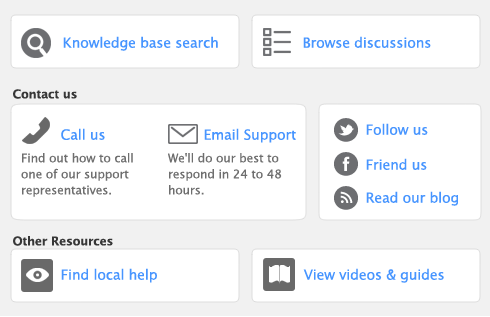Workstations are Windows computers that access a company file stored on another computer, referred to as a host computer. Accessing the remote company-file folder on the host requires you to complete these procedures for each Windows workstation on the local area network (LAN). This process is also known as mapping network drives.
When you are able to access the company-file folder containing the shared company file, you can create a desktop shortcut to the file. Clicking the shortcut starts your AccountEdge software and opens the shared company file.
Complete the relevant procedure on every Windows workstation that is to access the shared company file.
|
1
|
Select Network from the Windows start menu.
|
|
2
|
Display the host computer’s files in the window and locate the Company_Files folder.
|
If a password is required to access the shared company file folder, a window will request you to enter a user name and password when you attempt to access it.
|
3
|
Right-click the Company_Files folder and click Map Network Drive. The Map Network Drive window appears.
|
|
4
|
Accept the proposed drive letter or choose another, select the Reconnect at logon option, and click Finish. If access to the folder is password protected, a logon window may appear. If so, type the password and click OK.
|
In Windows Explorer, the Company_Files folder now appears as a network drive under Computer. For example, you might see the shared folder listed as Company_Files on 'Hongs-pc' (V:).
|
5
|
Open the shared Company_Files folder. You should be able to see the shared company file in it.
|
To access a shared company file folder on other Windows versions 

If a password is required to access the shared company-file folder, a window will request you to enter a user name and password when you attempt to access it.
|
1
|
In Windows Explorer, open Network Neighborhood (or My Network Places). You can also double-click the Network Neighborhood (My Network Places) icon on the desktop.
|
|
2
|
|
a
|
Expand Entire Network.
|
(In Windows XP Home, open My Network Places, click Add a network place and complete the Add Network Place wizard.)
|
b
|
Expand Microsoft Windows Network.
|
|
c
|
Expand the workgroup or domain in which the host is located, if there is one.
|
|
e
|
If a Connect to hostName window appears, complete the User Name and Password fields, select the Remember my password option and click OK. You should now be able to see the Company_Files folder.
|
In some versions of Windows, depending how the network access is set up, all networked computers may be visible in Network Neighborhood (My Network Places) without you needing to navigate to network folders.
|
3
|
|
4
|
In the Map Network Drive window (or wizard), accept the proposed drive letter or choose another, select the Reconnect at logon option, and click OK (Finish). If access to the folder is password protected, a logon window may appear. If so, type the password and click OK.
|
In Windows Explorer, the Company_Files folder now appears as a network drive under My Computer. For example, you might see the shared folder listed as ‘Company_Files on 'Hongs-pc' (V:)’.
|
5
|
Open the shared Company_Files folder to see the shared company file in it.
|
A fast way to start AccountEdge and open a company file is to put a shortcut to the software and company file on the Windows desktop. Then you only have to double-click the shortcut to be up and running.
If you are knowledgeable about shortcuts, you might be tempted to create just a shortcut to the company file. Unfortunately, there are not enough letter combinations to ensure that the .myo file extension is unique to AccountEdge software. So, double-clicking a shortcut just to a company file might start another program that works with a different kind of .myo file.
|
1
|
Right-click an empty area of the desktop and choose New and then Shortcut. The Create Shortcut wizard appears.
|
|
2
|
Type the path to the your AccountEdge software file in the Command line field (or in the Type the location of the item field) and click Next. Alternatively, you can click Browse and navigate to and select the program file, and then click Next.
|
|
3
|
On the next page, either accept the proposed name for the shortcut or type your preferred name in the Select a name for the shortcut field (or the Type a name for this shortcut field), and click Finish.
|
|
4
|
|
5
|
Click the Shortcut tab. The Target field displays the location of the AccountEdge program you entered in step 2 above.
|
|
6
|
[Windows 2000 and XP users only] Enclose the location of the program file in double quotation marks (“): "C:\AccountEdge\AccountEdgep.exe" for example.
|
|
7
|
In the Target field, type a space after the closing quotation mark (“), and then type the location of the company file, including the .myo file extension.
|
[Windows 2000 and XP users only] The path to this location should also be enclosed in its own quotation marks, for example, "C:\AccountEdge\AccountEdgep.exe"
|
8
|
Copy the location of the company file from the Target field, minus the name of the company file, and paste it into the Start in field, for example “V:\” as shown below .
|
|
9
|
|
10
|
Double-click the shortcut on the desktop to test it. AccountEdge should start on this workstation and immediately open the specified company file, whether it is stored on a remote host or this workstation.
|
|
11
|
Repeat from step 1 on each workstation that needs access to the company file.
|



